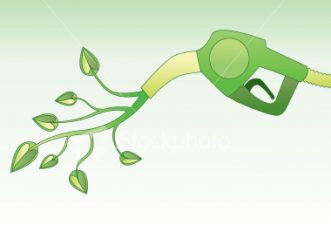Climate change predictions for the Middle East, like other arid regions of the world, are alarming. In an area known for its water scarcity, rainfall is expected to decrease even further in the near future, spelling disaster for the functioning of unique ecosystems — hotspots of biodiversity and rich genetic fodder for essential crops.
To test these dire predictions, Prof. Marcelo Sternberg of the Department of Molecular Biology and Ecology of Plants at Tel Aviv University’s Faculty of Life Sciences, together with ecologists from the University of Tübingen in Germany, subjected natural ecosystems to an experimental drought over the course of nine years, simulating predicted future climate scenarios.
In the course of their experiment, conducted in four different ecosystems ranging from desert (3.5 inches of annual rainfall) to moist Mediterranean woodland (30.7 inches of annual rainfall), the researchers found that, contrary to predictions, no measurable changes in annual vegetation could be seen.
Species richness does not change
None of the crucial vegetation characteristics — neither species richness and composition, nor density and biomass (particularly important for ecosystems traditionally used as rangelands) — had changed appreciably in the course of the rainfall manipulations.
“Based on our study, the going hypothesis that all semiarid regions will react strongly to climate change needs to be revised,” states Prof. Sternberg. The surprising results of the study were recently published in Nature Communications.
The affected ecosystems proved resilient, likely due to the highly variable amounts of annual rainfall for which the regions are known. The experimental climate changes, which simulated a decrease of about 30 percent of current rainfall, seem to fall within the natural “comfort zone” of wild plants.
Plants won’t migrate
In their experiment, the scientists were intent on testing one of the basic assumptions of climate change — that an affected plant species will migrate to more hospitable areas in order to survive. The researchers tested for two possible alternatives: first, a species dying off due to its inability to migrate to new and more suitable areas, and second, other varieties of the same species adapting to the new conditions created by the climate change.
“This second option has been overlooked by most researchers,” said Prof. Sternberg, who found local adaptation to be the primary course of action for the plant communities that were tested.
“Our experiment is likely the most extensive climate change study ever done, because of the number of sites involved, the long duration of experimental manipulations, and the immense species richness,” said Prof. Sternberg.
According to Prof. Sternberg, the Mediterranean and semi-arid annual plant communities would be little affected by climate change, at least in the short to medium term.
However, it cannot be ruled out that species composition could change after 20-30 years, because natural short-term climatic variations impose a different selection regime on organisms than a long-term trend of changing climate conditions.
Prof. Sternberg is currently searching for a new collaboration and funding to maintain the long-term experiment and expand its breadth and scope.
Dragon tree in Yemen from Shutterstock





Looks like the end of life on Earth.